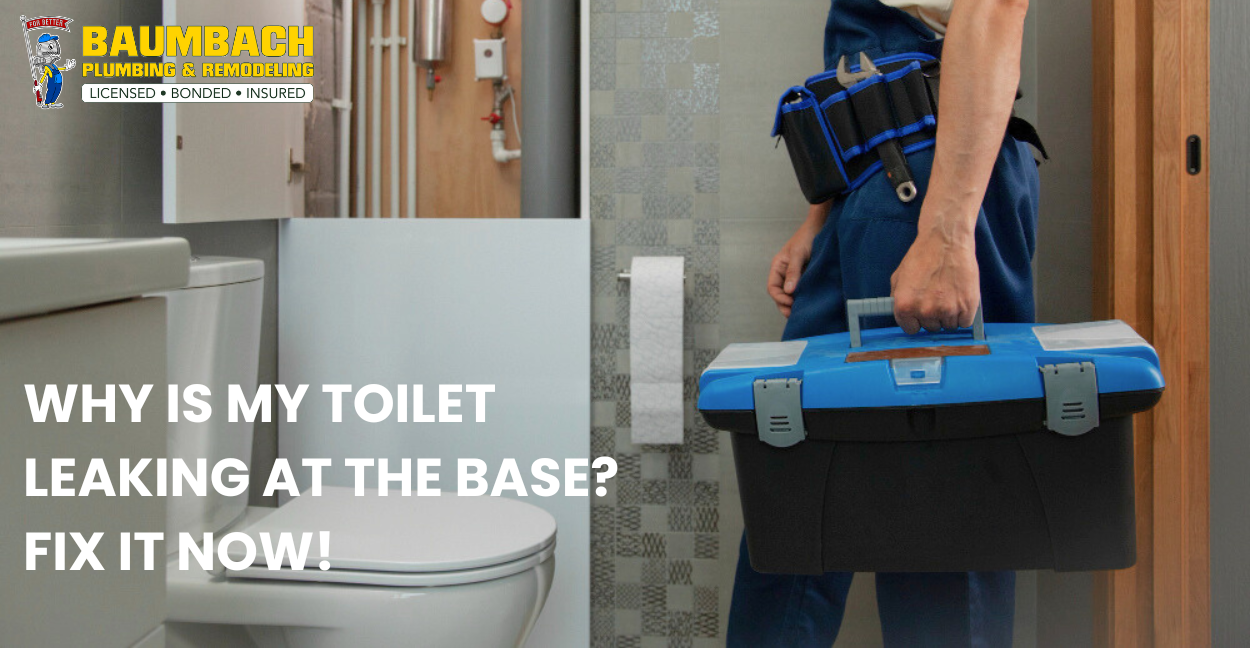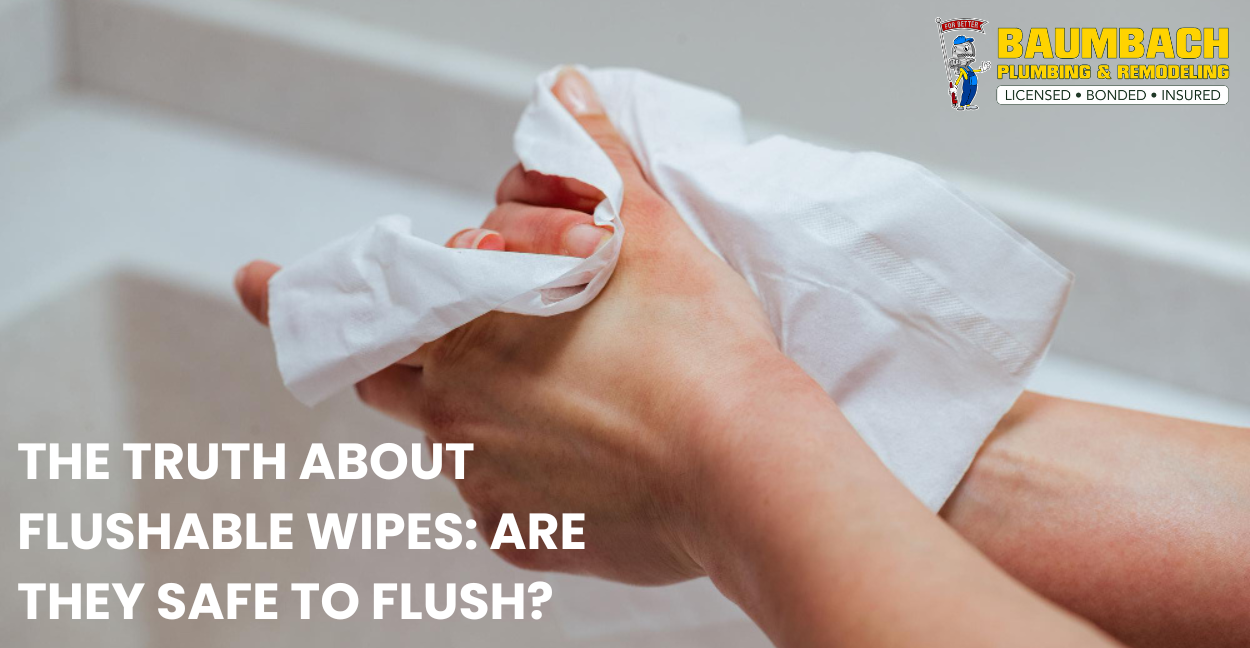Is there anything more frustrating than discovering a puddle of water around your toilet? It’s not just an inconvenience—it can lead to serious water damage if left unaddressed. If you’re dealing with a leaky toilet base, don’t panic. Understanding the root cause and knowing how to fix it can save you time, money, and a lot of headaches. Let’s dive into why is my toilet leaking at the base. and what you can do to fix it now!
Common Causes of a Toilet Leaking at the Base
Understanding the common causes can help you diagnose and fix the issue effectively. Now, we will dive into the detailed explanations of the most common causes of a toilet leaking at the base.
1.) Wax Ring Failure
What is a Wax Ring?
A wax ring is a donut-shaped seal located between the toilet and the toilet flange on the floor. Its primary function is to create a watertight seal to prevent leaks and block sewer gases from entering your bathroom.
Symptoms of a Failing Wax Ring
- Water pooling around the base of the toilet
- Unpleasant sewer odors in the bathroom
- A wobbly or unstable toilet
Causes of Wax Ring Failure
- Age and Wear: Over time, wax rings can degrade, crack, or become brittle, losing their effectiveness.
- Improper Installation: If the wax ring was not seated correctly during installation, it could fail prematurely.
- Movement of the Toilet: Any movement or shifting of the toilet can break the seal created by the wax ring.
2.) Loose Toilet Bolts
Identifying Loose Bolts
Loose bolts can cause the toilet to move or rock, breaking the seal at the base and causing leaks.
Causes of Loose Toilet Bolts
- Improper Installation: If the bolts were not tightened correctly during installation, they could loosen over time.
- Regular Use: Frequent use can gradually loosen the bolts.
How to Fix Loose Toilet Bolts
- Check Bolt Tightness: Use an adjustable wrench to check the tightness of the bolts at the base of the toilet.
- Tighten or Replace Bolts: If the bolts are loose, tighten them carefully. If they are corroded or damaged, replace them with new ones.
- Ensure Stability: Make sure the toilet is stable and does not rock after tightening the bolts.
3.) Cracked Toilet Bowl
Detecting Cracks
Cracks in the toilet bowl can lead to leaks. They can be difficult to spot but look for hairline fractures around the base or unusual water pooling.
Causes of Cracked Toilet Bowls
- Age and Wear: Over time, the porcelain can weaken and develop cracks.
- Physical Impact: Dropping heavy objects on the toilet can cause it to crack.
- Manufacturing Defects: Sometimes, defects in the manufacturing process can result in weak spots that crack over time.
How to Address a Cracked Toilet Bowl
- Small Cracks: Minor cracks can sometimes be repaired with waterproof epoxy.
- Significant Cracks: For larger or structural cracks, it’s best to replace the toilet bowl entirely to avoid further issues.
4.) Faulty Water Supply Line
Recognizing Supply Line Issues
The water supply line connects the toilet to the plumbing system. If it’s damaged or improperly connected, it can cause leaks at the base.
Causes of Faulty Water Supply Lines
- Wear and Tear: Over time, the supply line can wear out, especially if it’s made of less durable materials.
- Loose Connections: If the connections are not tight, water can seep out.
How to Fix a Faulty Water Supply Line
- Inspect the Line: Check the supply line for any signs of wear, kinks, or loose connections.
- Tighten Connections: Use a wrench to secure the connections at both ends of the supply line.
- Replace if Necessary: If the line is damaged, replace it with a new, flexible supply line.
5.) Condensation Issues
Understanding Condensation
Condensation occurs when warm, moist air contacts the cold surface of the toilet tank, leading to water droplets forming and dripping down to the base.
Causes of Condensation
- High Humidity: Bathrooms with high humidity levels are more prone to condensation.
- Cold Water in the Tank: If the water in the toilet tank is significantly colder than the room temperature, condensation can occur.
How to Address Condensation Issues
- Anti-Sweat Valve: Install an anti-sweat valve, which mixes warm water with the cold water entering the tank to reduce condensation.
- Toilet Tank Liner: Use a toilet tank liner to insulate the tank and prevent condensation.
- Improve Ventilation: Use exhaust fans or dehumidifiers to reduce humidity levels in the bathroom.
6. Improper Installation
Common Installation Mistakes
Improper installation can lead to leaks at the base of the toilet. This includes misaligned pipes, uneven flooring, and improperly seated wax rings.
Causes of Improper Installation
- Lack of Experience: DIY installations without proper knowledge can result in mistakes.
- Haste: Rushing through the installation process can lead to errors.
How to Correct Installation Errors
- Proper Alignment: Ensure the toilet flange is properly aligned with the drain pipe.
- Level the Floor: Make sure the floor is level before installing the toilet to prevent rocking.
- Seat the Wax Ring Correctly: Ensure the wax ring is centered and fully compressed to create a good seal.
If you’re experiencing persistent issues with your toilet, don’t hesitate to contact Baumbach Plumbing & Remodeling (Professional Plumbing Services in Fairfax, VA). Our expert plumbers are here to help you diagnose and fix any plumbing problems quickly and efficiently. Book your appointment today and say goodbye to leaks!
Identifying the Source of the Leak
Understanding where a leak originates is crucial in addressing the issue effectively and preventing further damage. Leaks in your home can arise from various sources, each requiring a different approach to fix. Now, we will explore the process of identifying the source of a leak, and the common places where leaks occur.
Common Sources of Leaks
Identifying the exact location of a leak involves inspecting the most common sources. Here are the primary areas to check:
a. Plumbing Fixtures
Plumbing fixtures like faucets, sinks, and toilets are frequent culprits. Here’s how to inspect them:
- Faucets and Sinks: Check under the sink for puddles. Inspect the faucet handles and spout for drips.
- Toilets: Look around the base of the toilet for water. Listen for continuous running sounds indicating an internal leak.
- Showers and Bathtubs: Examine the caulking and grout. Water stains on the ceiling below a bathroom suggest a leak.
b. Pipes and Plumbing Lines
Hidden leaks often occur in the pipes within walls, floors, and ceilings. Here’s what to look for:
- Visible Piping: Inspect exposed pipes in basements and crawl spaces for corrosion, rust, or water droplets.
- Walls and Ceilings: Look for water stains, blistering paint, or damp spots on walls and ceilings.
- Flooring: Warped or buckling floors can indicate a pipe leak underneath.
c. Roofing and Attic
Leaks from the roof can travel along rafters and show up far from the source. Check the following:
- Roof: Inspect for missing, damaged, or loose shingles. Look for water pooling after rain.
- Attic: Examine the attic for water stains, mold, or damp insulation. Use a flashlight to spot wet areas.
d. Appliances
Household appliances that use water can also be sources of leaks. These include:
- Water Heaters: Look for puddles around the base and listen for hissing sounds.
- Dishwashers: Check under the dishwasher for leaks. Inspect hoses and connections.
- Washing Machines: Inspect the hoses and connections. Look for water on the floor around the machine.
e. Exterior Sources
Water intrusion can also come from outside the home. Consider these areas:
- Gutters and Downspouts: Ensure they are clear of debris and direct water away from the house.
- Foundation: Check for cracks or pooling water near the foundation.
- Windows and Doors: Inspect the seals around windows and doors for gaps or cracks.
How to Identify the Source of a Leak
Identifying the source of a leak involves systematic inspection and testing. Here’s a step-by-step approach:
a. Visual Inspection
Start with a thorough visual inspection. Follow these steps:
- Trace the Water: Start from the visible water and trace back to the highest point you can find water.
- Use a Flashlight: Shine a flashlight into dark areas, like under sinks and in the attic, to spot water.
- Check for Corrosion: Look for signs of corrosion or rust on pipes and fixtures, indicating water exposure.
b. Use of Tools
Certain tools can help in leak detection:
- Moisture Meter: A moisture meter can detect dampness in walls, ceilings, and floors, helping pinpoint hidden leaks.
- Thermal Imaging Camera: This tool shows temperature differences, revealing areas of dampness.
- Leak Detection Dye: Adding dye to the water can help identify leaks in toilets and plumbing systems.
c. Isolate the Leak
To isolate the leak source, you can perform tests:
- Turn off All Water: Turn off all water-using appliances and fixtures. Check the water meter. If it continues to run, there’s a hidden leak.
- Test Each Fixture: Turn on each fixture one at a time and check for leaks. This helps identify which fixture or appliance is the source.
- Use Food Coloring: Add food coloring to the toilet tank and see if it appears in the bowl without flushing. This indicates a leak.
Experiencing a leak in your home? Don’t wait for the problem to worsen. Contact Baumbach Plumbing & Remodeling today for a free consultation and let our experienced professionals help you locate and fix the leak quickly and efficiently.
Step-by-Step Guide to Fixing a Leaking Toilet Base
Step 1: Turn Off the Water Supply
First, locate the water supply valve behind your toilet and turn it off. Flush the toilet to empty the tank and bowl. Use a sponge or towels to soak up any remaining water.
Step 2: Empty the Toilet
Disconnect the water supply line from the toilet tank. Use a bucket to catch any water that might spill out.
Step 3: Remove the Toilet
Carefully remove the caps covering the toilet bolts at the base. Use a wrench to loosen and remove the bolts. Gently rock the toilet back and forth to break the seal and lift it off the flange.
Step 4: Inspect and Replace the Wax Ring
Remove the old wax ring from the flange and the base of the toilet. Clean the area thoroughly with a putty knife. Place the new wax ring on the flange, ensuring it’s centered.
Step 5: Reinstall the Toilet
Lower the toilet back onto the flange, aligning the holes with the bolts. Press down firmly to compress the wax ring and create a seal.
Step 6: Tighten the Toilet Bolts
Reinstall the toilet bolts and tighten them carefully. Avoid overtightening as it can crack the toilet base.
Step 7: Reconnect the Water Supply
Reconnect the water supply line to the toilet tank. Turn the water supply valve back on and let the tank fill up.
Step 8: Test for Leaks
Flush the toilet several times to ensure there are no leaks. Check around the base for any signs of water.
Frequently Asked Questions
Why does my toilet leak only sometimes?
Intermittent leaks can be puzzling and frustrating. They often occur due to a combination of factors. One common reason is fluctuating pressure on the wax ring seal. When someone sits on the toilet, the added weight can temporarily compress the wax ring, causing a seal failure and a leak. Additionally, minor shifts in the toilet’s position over time can break the wax ring’s seal intermittently. Regular inspection and ensuring the toilet is properly seated can help prevent these sporadic leaks.
Can I use plumber’s putty instead of a wax ring?
Plumber’s putty is not suitable for sealing toilets. It is typically used for sealing drains and faucets, as it remains pliable and does not provide the same level of sealing integrity as a wax ring. A wax ring or a modern wax-free seal is designed specifically for the toilet-to-drain connection, creating a watertight seal that can withstand the weight and movement of the toilet. Using plumber’s putty instead of a wax ring could lead to leaks and improper sealing.
How tight should toilet bolts be?
Toilet bolts should be snug enough to keep the toilet securely anchored to the floor but not overly tight. Over-tightening the bolts can crack the toilet base or the flange, leading to leaks and potentially expensive repairs. A good rule of thumb is to tighten the bolts evenly on both sides, checking for stability without using excessive force. Once the toilet is stable and doesn’t rock, the bolts are likely tight enough.
Is a leaking toilet dangerous?
Yes, a leaking toilet can be dangerous if left unaddressed. Water damage is the primary concern, as it can weaken the flooring, cause mold growth, and lead to structural issues in your home. Mold and mildew can also pose health risks, especially for those with respiratory issues. Additionally, constant water leakage can increase your water bill and waste a significant amount of water. It’s crucial to fix leaks promptly to avoid these potential dangers.
What if the leak persists after replacing the wax ring?
If the leak continues after you’ve replaced the wax ring, it might indicate a more serious underlying issue. Possible causes include a damaged or improperly installed flange, cracks in the toilet bowl, or issues with the toilet’s installation. In such cases, further inspection is necessary. It’s advisable to call a professional plumber to diagnose and fix the problem accurately. They can identify less obvious issues and ensure the repair is done correctly to prevent future leaks.
About Baumbach Plumbing & Remodeling
Looking for reliable plumbing services? Baumbach Plumbing & Remodeling is here to help! With years of experience serving Alexandria(VA), Arlington(VA), Fairfax Station(VA), McLean(VA) and many more areas. We offer a wide range of plumbing solutions to meet your needs. From routine maintenance and repairs to new installations and emergency services, our team of skilled professionals is dedicated to providing top-notch service and ensuring customer satisfaction. Contact us today to schedule an appointment or learn more about our services. Let us take care of your plumbing needs so you can enjoy peace of mind knowing your home or business is in good hands.






